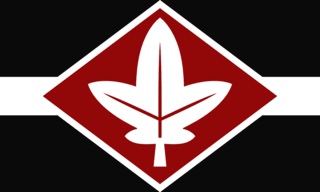Kaskaidan Union
This article is incomplete because it is pending further input from participants, or it is a work-in-progress by one author. Please comment on this article's talk page to share your input, comments and questions. Note: To contribute to this article, you may need to seek help from the author(s) of this page. |
The Kaskaidan Union Yeonhab Kaseukaida | |
|---|---|
|
Flag | |
| Capital and Largest City | Saigyu |
| Official languages | Kaskaidan, Kozakuran, Kāichrén-Gengo |
| Recognised regional languages | Seurian, Kaisam |
| Ethnic groups (2024) | 74% Kaskaidan 9% Apaiq, 4% Seurian 14% Other |
| Religion (2024) | 62% Yikausiu, 8% Neterist, 16% irreligious, 14% other |
| Demonym(s) | Kaskaidan |
| Government | Federal Presidential Republic under a Military Junta |
• President | Muk Young-Jae |
• Command Senior Staff Chairman | Dahee Kim |
| Legislature | Union Congress |
| Area | |
• | 30,495,050 km2 (11,774,200 sq mi) |
| Population | |
• Estimate | 724,000,000 |
• 2024 census | 724 Million |
• Density | 23.7/km2 (61.4/sq mi) |
| GDP (nominal) | 2024 estimate |
• Total | 16,423,881,304,991 |
• Per capita | 22,099 |
| Currency | Kaskaidan Won (KAW) |
| Time zone | Kaskaidan Central Time |
| Driving side | left |
| Calling code | +874 |
| Internet TLD | .kas |
Kaskaida, also known as the Kaskaidan Union or the Yeonhab Kaseukaida, is a federated presidential republic located on the Kistavich continent, bordering Anagonia and the République Autonome d’Arcadie via land and Seuria and Ghant navally. It is one of the largest countries, both economically and population-wise, in Esvanovia, and is a major regional power in Kistavich. Its largest city is also its capital city, Saigyu, although all currently existing subject regions possess their own regional capitals.
Kaskaida was formed from the remnants of the Kaisam Confederation, a native-lead political entity which had unified with Kaskaidan-majority merchant and piracy hubs formed generations after the forced expelling of the then-Bèiqūren population by both the Jungg'oan Empire and the early Kāichrén states during the course of the late pre-collapse period (300BCE-250BCE). During the course of the forced expelling, the Bèiqūren would establish notable port and trading areas, alongside locations where they could navally raid out of without fear of major retaliation - an action they would especially utilize against the remnants of the Jungg’oan Empire, which contributed to more forced expelling of Bèiqūren populations, who would eventually gravitate towards Kaihima. Following the Liberation of Kaihima, the pirates expelled from Kaihima would act in collaboration with already extant Kaskaidan-ethnic elements in charge of key parts of the state apparatus to seize greater control - working rapidly to industrialize to check Anagonian power.
Following the Great War, Kaskaida would lose a severe amount of its coastal territory, alongside being demilitarized and forced into economic treaties beneficial to Anagonia and allies. Kaskaida's military would be in a poor state until the Great Defection in 1976, which provided them with a noticeable amount of naval assets from Neo-Korea - some of which remain in service into this day.
In the recent period, Kaskaida's former President - Rosara Kozyu - was assassinated by an unknown group with Anagonian military equupment during the annual Ranamaduri festivities, an action that would lead to major civic violence between police and gang forces, eventually ending in the military being forces to intervene. After that point the Gyeonjang Clique, a group of nationalistic military officers in alliance with members of the civic government and the military's Command Senior Staff would institute a defacto military junta, with the constitution being altered via emergency degree to grant the executive unchecked political power.
